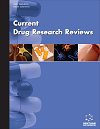
Full text loading...

A key challenge during drug development is getting the low-solubility molecules from the drug discovery phase to the formulation phase. The low bioavailability of a drug is typically correlated with its low solubility, which may negatively impact the drug’s effectiveness and its ability to act. Traditionally, the problem of low solubility was resolved by employing empirical trial-and-error methodologies to ascertain the best available technologies for achieving the drug's desired bioavailability. However, these traditional methods are time-consuming and require the use of more resources, posing a challenge to developmental timelines and budgets. With the progress of artificial intelligence (AI) and machine learning (ML), it is possible to accurately predict the appropriate drug-excipient mixtures and solubility enhancement technologies for drug development. This review aims to present intelligent modeling that supports knowledge generation, problem solving, and decision making. It highlights various AI-based strategies applied across the drug development pipeline - from solubility prediction and selection of excipient(s) to formulation optimization, solid dispersion evaluation, and real-time monitoring of drug release. Furthermore, it examines the role of AI in modeling pharmacokinetic (PK) and pharmacodynamic (PD) behaviors, thereby enabling more accurate predictions of in vivo outcomes. By leveraging intelligent algorithms, pharmaceutical scientists can accelerate development timelines, enhance decision-making, and improve the efficiency of formulation design. The pharmaceutical industry has tremendous opportunities to improve patient care and drug development processes through ongoing AI research and applications.

Article metrics loading...

Full text loading...
References


Data & Media loading...